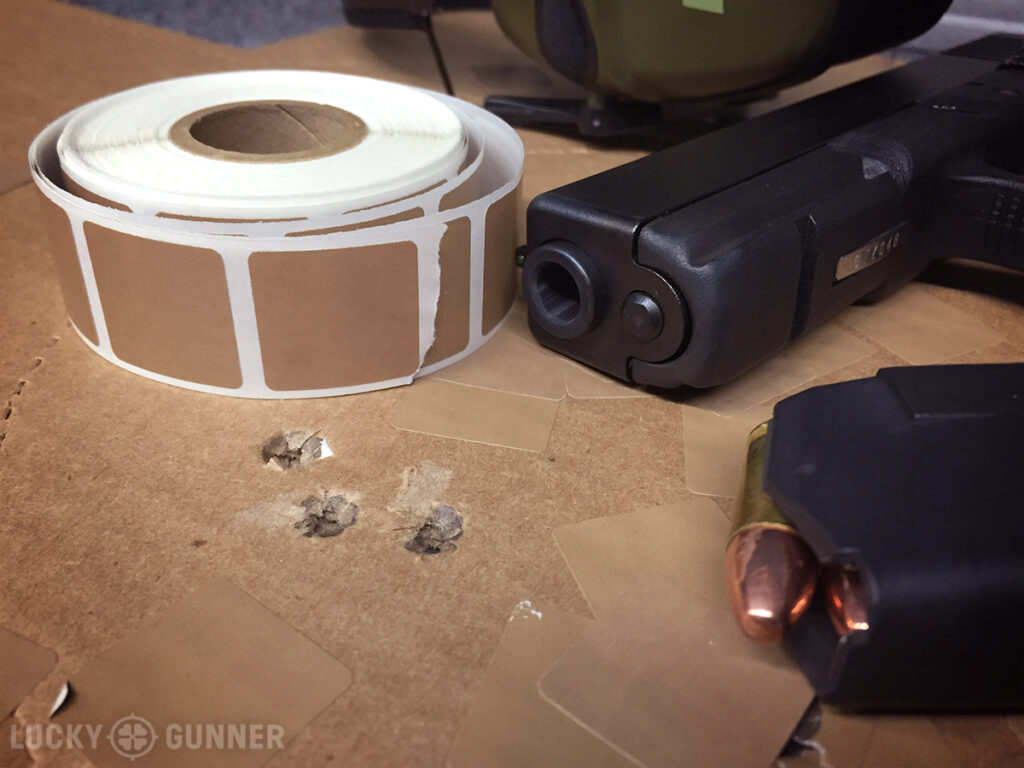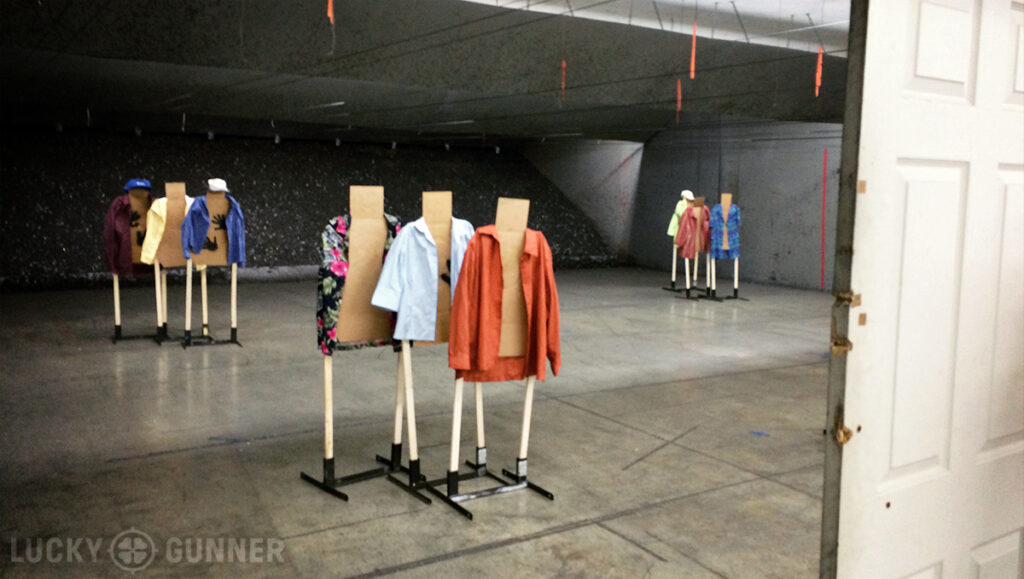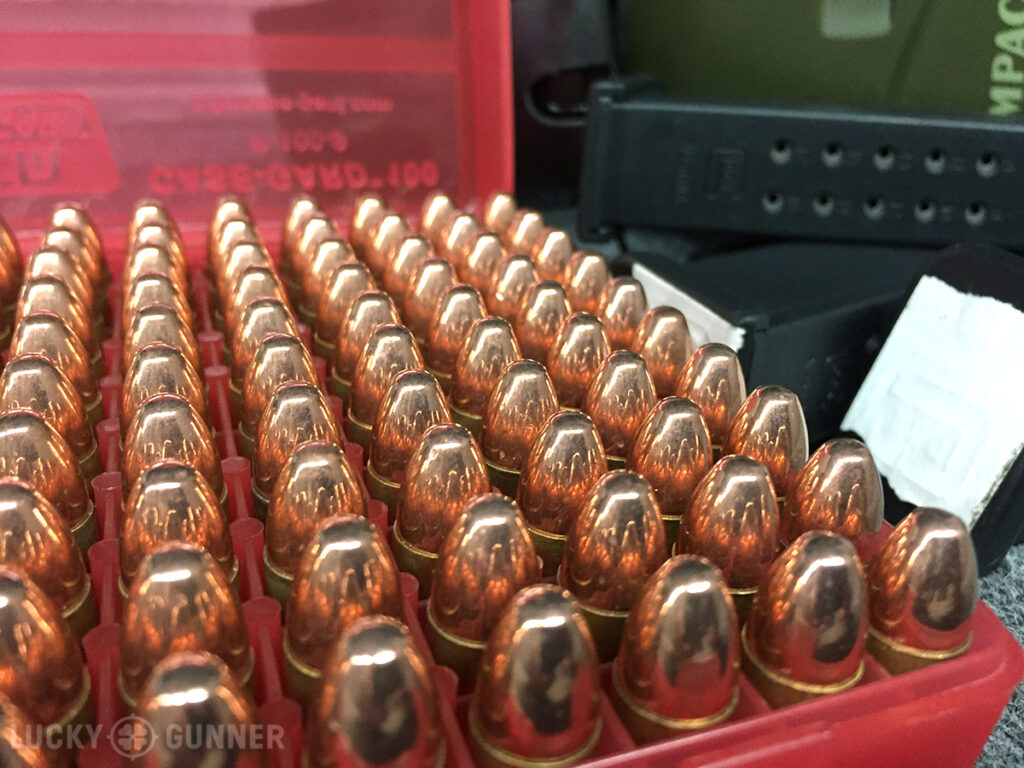As you may remember from my Frugal Expert series, I am a lifelong pistol shooter who only recently underwent a total transition to revolvers. Even after hundreds of hours of military training, only some of the fundamentals of marksmanship – sight alignment, sight picture, trigger control – transitioned to this new world with me. I had to relearn grip, reloads, malfunction drills, and a number of other things that fall under the heading of revolvers and simply don’t translate from semi-autos. This provided a pretty steep learning curve, and while I definitely enjoy the challenge of learning something new, there was only so much that flat-range work could do for me. Shooting from the bench is a great way to develop technique and improve discrete steps of the shooting process, but it doesn’t teach you much about shooting the gun in a dynamic environment.
Shortly after I went all-in with revolvers, I dipped my toe back into the world of casual competition (please don’t think I am a serious competitor – I’m not). I decided that taking a revolver out to a match would provide a good opportunity to put all my dry-practice and range work to the test and see how much I was progressing. If you’ve been shooting for a while, it’s not often that you get to walk a mile in the shoes of a beginner, but this is exactly what it felt like for me. Since that first match with a wheel gun, I’ve learned some things about myself and about revolvers, and I’ve developed some thoughts about what competition can do for any defensive-minded shooter.
Reasons Not to Play
I will freely admit that there can be some downsides to competition, especially for shooters who are focused on the defensive use of firearms. Overall, these downsides are pretty minor when you consider the benefits that can be gained from competition, but if you’re looking for an excuse not to get out there, I’ll give you a couple. First, you probably aren’t going to like at least some of the rules. I hear this from my buddies who I still can’t convince to come out: “But in real life, I’d never retain a magazine,” or “On the street, I’d always reload on the move.” I get it – we all have firm opinions on such matters and doing something different than what you know and like can be uncomfortable or frustrating.
I want to put this complaint back on the shooter and use magazine retention as an example (which is only occasionally required, by the way). If you don’t want to retain a magazine, no one is going to kick you off the range for dropping it. As long as you are safe and not in gross violation of the flow or mechanics of the stage, you could drop it – but you’re going to pay for it in points. If you’re that serious about maintaining your real-world skills, just ignore your score. That’s far easier said than done – I get just as competitive as the next guy, and I’m not the person out there saying “I’m only competing against myself.” But, if I drop points for my toes being over the line or dropping a mag I should’ve retained, I’m not going to sweat it too much because the overall experience is a huge net positive.
The second most common complaint I hear is the Gear Excuse. “They won’t let me run my ___.” Fill in that blank with appendix holster, war-belt, AR pistol, 33-round Glock magazine, etc. Sometimes the Gear Excuse is accompanied by, “I’m used to this holster so I don’t want to build training scars.” I also understand this; we all want to shoot the gear we love and have familiarity with. But I also understand, based on some not-insignificant experience, that drawing from a different holster is not going to undo months of experience on your carry holster. Sure, your presentations might not be buttery smooth at the match, but I’d be willing to fumble a draw or two to get all the other benefits offered.
If you have reasons like these that are holding you back, I encourage you to reconsider. There are definitely some downsides and some artificiality to the contest. However, the array of skills you get to work on in even a tame action pistol match is so much greater than those you can practice at the flat range, and the benefits definitely outweigh the disadvantages. If you go and decide you don’t get anything out of it or just don’t enjoy it, I have no argument with that. But if you haven’t attended one, get out there and find out what you’re missing! Stop making excuses.
Multi-Dimensional Environment Shooting
As I pointed out in the first paragraph, the flat/static range can give you some good training in the fundamentals. What it is not ideal for is learning to engage multiple targets at multiple depths, heights, and angles while on the move or while shooting around barricades. This is all pretty standard fare for an action pistol match. Targets can be positioned high and low. From a single firing position, you may have to engage targets ranging from muzzle-contact distance out to twenty-five yards. Targets can be partially concealed in windows or doorways or obscured by cover. At some ranges, they may be oriented to your front, left, and right, and it’s very possible they’ll be angled away, presenting you only with quartering shots.
In some matches, you are also encouraged to engage targets based on their threat precedence. The target closest to you probably represents the greatest threat so it should be addressed first. If all targets present the same level of threat, the idea is to get one round in each and then come back and readdress. Adding to the value, most of your targets must also be engaged from behind cover. This is one aspect I really appreciate about IDPA; use of cover seems to be pretty well thought out. You can’t expose yourself to a target you aren’t engaging, extend your weapon or arms beyond cover, or shoot the cover (yes, it happens) without incurring a penalty. All of this adds up to a much richer and more challenging range session than you can otherwise typically get.
Seldom will you encounter a match stage that does not require movement. Stages may require you to shoot while advancing, retreating, or moving laterally across the field. How often do you get to practice that at your local indoor range? If you’re not actually shooting on the move, you will, at minimum, be moving from covered position to covered position. Even this has something to instill: safety. If you’re not used to running with a loaded gun in your hand, it can be easy to lose muzzle awareness when running from position to position or to get lazy about fully removing the trigger finger from the trigger guard. This is simply not tolerated at any of the matches I’ve attended and creates a pretty rapt attention to safety.
Target Discrimination
Discriminating between threat and non-threat targets is something I have never seen practiced on the standard flat range. Non-threats (or “no-shoots”) are common fare in action pistol matches. They are the same cardboard silhouettes as the threat targets but are distinguished in some way from threats. Shooting one typically incurs a huge time penalty, so shooters are strongly encouraged to determine if it is actually a threat or not before shooting it. Non-threats are frequently placed very close to threats, forcing you to slow down and focus on accuracy, a skill that translates pretty well to going about armed in places where not everyone is a bad guy, like your local grocery store, shopping mall, or restaurant.
Draw From The Holster, Reload From The Body
I don’t go through life with a handgun at the low ready or at “position 3”, but this is what I see mostly commonly practiced at the range. Even if shooters wish to practice from the draw, many ranges prohibit the practice. I understand the safety reasons behind this, but it doesn’t fix the problem. The good news is even a casual competition is a good opportunity to get a handful of reps in. At an action pistol match, drawing from the holster is almost always compulsory, and even though you’ll get to draw only a few times, it can teach you a lot about your technique and your gear.
For example, a first-time shooter recently showed up at our informal, local match. He walked to the starting box for his very first stage wearing an M&P in a small-of-the-back holster. It became almost immediately apparent to him why this was a bad idea: it was very hard to draw without muzzling the up-range area (and a visibly concerned range officer), and impossible to reholster safely. The RO calmly explained the problem, had him clear his weapon, and sent him back to the line. Almost immediately someone loaned him a workable holster and he was able to get back in the rotation and shoot the stage. The following week he was back with a new, high-quality piece of kydex in the four-o-clock position. This was probably an embarrassing way to learn this lesson, but it was much better to learn it in a safe, friendly atmosphere than the alternative.
Another technique that gets drilled into you in action competition is the speed/emergency/slide-lock reload. Since your score is largely based on time, getting your gun reloaded quickly is imperative. Also, in a match your magazines are not neatly arrayed before you on the shooting bench, so not only must you reload quickly, you must reload from your belt or pocket. Though it is possible, reloading from the body is something that I infrequently see practiced on the flat range. Reloads were my single biggest worry going into my first match with a revolver because I always end up doing twice as many as everyone else. My dry practice proved helpful as I didn’t do all that poorly, and my reloads have only gotten faster and smoother since.
Quantifiable Progress: Time + Accuracy = Score
I’m sure you’ve seen it at your local indoor range: the person in the stall next to you blasting away at a full-sized silhouette. Rounds are all over the target in no discernible group, and at some fairly modest distances. What makes this even more frustrating is I see the same people, week after week, duplicating the exact same session. These individuals, like many, go to the range with no clear training goals and no metric of improvement. Competition will change that by giving you some very definitive goals to work toward. Though the two major competitive shooting bodies, IDPA (the International Defensive Pistol Association) and IPSC (the International Practical Shooting Confederation) are very different animals, their scoring systems aren’t that much different.
Your score is based largely on the time you take to complete the stage, from starting buzzer until your last shot. The general idea is the lower your time, the better. But you can’t totally focus on speed and forget accuracy, either. For every shot outside of a designated area on the target, time is added to your score. Time is also added for failing to neutralize targets, procedural violations (breaking the rules of the game, breaking cover, etc.), and shooting non-threat targets. Shooting against a scoring system can give you an indication of where you’re doing well and what you need to work on. My first trip to a match with a wheel gun resulted in my score sheet near the bottom overall. A couple months later I’m edging into the upper third overall because I can look at my score sheet and get a pretty good idea of where I need to focus my dry practice and flat range work. Though the stages at each match are all radically different, this is still a pretty decent indicator of improvement.
The Bottom Line
I’m sure I haven’t covered everything, and there are probably some additional benefits I’ve overlooked. The end result of these competitions is that I’ve had the opportunity to shoot my gun in a much more dynamic environment that I otherwise would have. Sure, I can go to the range every day if I like, and stand at a static yard-line, and punch holes in paper, and there is absolutely value in that. But shooting my revolver under some stress – against the clock, against others, and with an audience – offers a completely different experience. I’m not going to say it replicates the “real-world”, but it is one of the few venues that I can shoot under some stress, on the move, in a 180-degree environment, and get some quantifiable feedback about my performance.
If you haven’t tried shooting a competition, you should give it a go. If you’re not sure whether you want to shoot or not and would simply like to observe, you can do that, too. Most, if not all, of the shooters at a match will be happy to explain anything you want to know – gear requirements or restrictions, firearm divisions, safety rules, courses of fire, and just about anything else. My only piece of advice if you go to observe: bring your gear. A good percentage of people who go “just to watch” end up really wishing they could shoot, which brings up the final benefit I’ll mention: fun! Shooting competition is really enjoyable in addition to being a real skill-builder.





Generally agree with. I do shoot IDPA and want to point to some frustrations. 1) Some of the S.O’s. are really hung up on “teaching” you their way of doing things. Even when I take the time to explain my approach to the “game” they are often either disinterested in hearing what I’m saying or they tell me I should shoot another game. 2) at times the other shooters are gamers and complain about each and everything they disagree, with putting a general damper on the fun of the game. 3) and lastly (for this diatribe) they some times do set up stages that require the shooters to go on the offensive. I know I am talking about my experiences with two different clubs but it can create a less than pleasurable environment for the “new” shooter who wants to learn without condescending lectures and questionable approaches to the scenario Again, I do shoot the game but then I’m an old fart and it’s pretty much impossible to tick me off to the point where I can’t find a way to enjoy myself.
I’ve had similar experiences. The “range jockeys” that seem to spend every free moment hanging out at the range (which is fine, of course) but it breeds a sense of superiority when they encounter less-involved shooters. I was actually made fun of at my second match by someone for not being a real “gamer.” Whatever that means. I think it had something to do with the fact that I was wearing street clothes with no shooting vest or gun logos…
I’ve found that if I walk confidently and answer shortly but politely with, “OK, thank you,” it shuts down the conversation and I can critique myself later when reviewing the score sheet and video if I was able to get any.
Hmmm. Matches must be cheap to attend in the US. If I compare the cost and actual time done shooting during an IPSC or CAS match in my country, I usually chose a training course instead. Better bang for the buck.
It has me scratching my head as to why you would move to a non gun friendly state. But, what you are encountering now could be our bleak future.
All in all great artical. I would love to see one of your matxhes. You should get you a go pro.
I shoot gssf now, I might look into the idpa sounds fun.
In my country (Philippines), shooting sports is for the rich and powerful (businessmen, politicians). Guns and ammo are incredibly expensive, not to mention the licensing is strict (and expensive too!). Seems like everything about guns here is about the money.